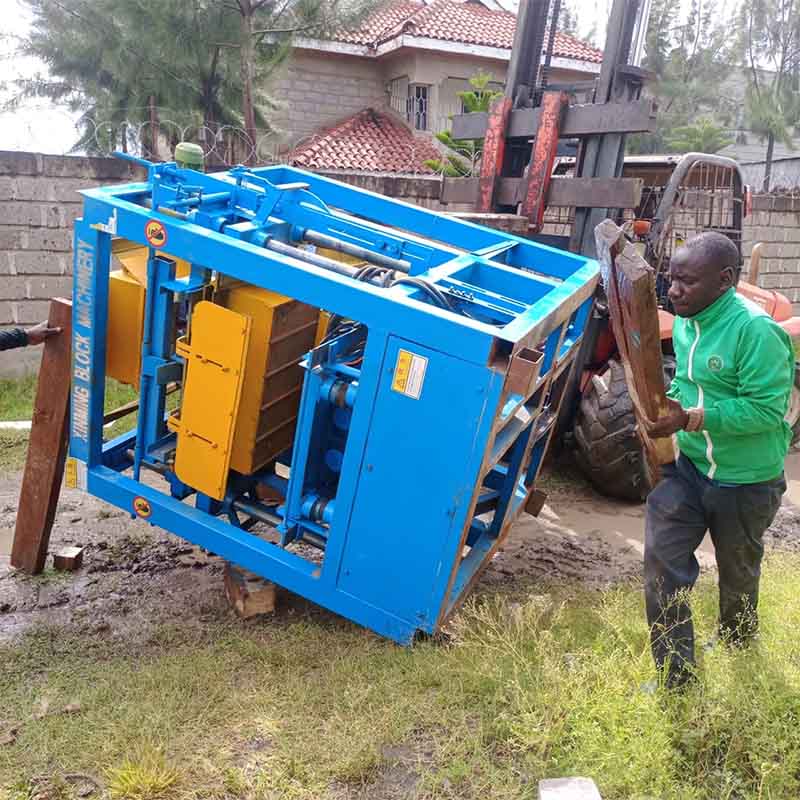
The construction industry is undergoing a remarkable transformation driven by innovative technologies.
Among these advancements, the next-generation block machine stands out as a prime example of how efficiency and innovation can converge to redefine construction processes.
This essay delves into the evolution, features, benefits, and potential challenges posed by the next-generation block machine, shedding light on its role in revolutionizing construction through streamlined efficiency and cutting-edge innovation.
Evolution of the Next-Generation Block Machine
The evolution of block machines from manual labor to the next-generation marvels is a testament to human ingenuity and the pursuit of efficiency.
Traditional block-making methods were labor-intensive and time-consuming, often resulting in inconsistencies and delays.
The emergence of automated block machines marked a significant leap forward, enabling the mechanized production of uniform blocks.
The transition from these automated systems to the next-generation block machine reflects a deeper integration of technology into construction.
These machines incorporate advanced robotics, smart sensors, data analytics, and automation to streamline every stage of block production.
This evolution mirrors the broader trend of digitalization and automation shaping the future of industries across the globe.
Features and Capabilities
The next-generation block machine boasts an array of features that set it apart as a game-changer in the construction landscape:
Robotics and Automation: These machines are equipped with robotic arms and automated systems that handle tasks ranging from material mixing and block formation to stacking and packaging.
Smart Sensors and Data Analytics: Embedded sensors collect real-time data on production metrics, machine performance, and material usage.
This data is analyzed to optimize operations and facilitate predictive maintenance.
Customization and Complexity: Architects and builders can harness the machine’s flexibility to create intricate designs and unique shapes, opening doors to novel architectural expressions.
Energy Efficiency: The integration of energy-efficient components and optimized processes aligns with sustainable construction practices by reducing energy consumption and waste.
Digital Connectivity: Many next-generation block machines are designed for remote monitoring and control through digital platforms, enabling real-time oversight and interventions.
Benefits and Transformative Implications
The adoption of next-generation block machines promises transformative benefits for the construction industry:
The integration of robotics and automation accelerates the block production process, significantly reducing project timelines and increasing overall efficiency.
Automated processes ensure consistent quality, uniform dimensions, and structural integrity, thereby improving the longevity and safety of constructed buildings.
The reduction of manual labor not only streamlines construction but also addresses labor shortages and enhances worker safety.
Smart sensors and data analytics enable real-time monitoring of machine performance, production trends, and energy consumption, allowing for data-driven decision-making.
Next-generation block machines align with the principles of smart construction, where data and technology are harnessed to optimize the entire construction lifecycle.
Challenges and Future Horizons
While the potential of next-generation block machines is immense, several challenges must be considered:
Operating and maintaining these advanced machines requires specialized training and expertise.
The initial costs associated with acquiring and implementing these machines can be substantial, especially for smaller construction companies.
The integration of digital connectivity raises cybersecurity concerns, requiring robust safeguards to protect sensitive data and operations.
However, the trajectory of these machines points toward an exciting future:
The exploration of novel construction materials optimized for next-generation block machines can further enhance performance and sustainability.
Continued advancements in robotics and artificial intelligence could lead to autonomous operation, where machines adapt to changing conditions without human intervention.
As these machines become more integrated into construction sites, they could enable seamless collaboration between human workers and automated systems.
These machines have the potential to address housing shortages and infrastructural needs in developing countries, making construction more accessible and efficient.
The next-generation block machine embodies the marriage of efficiency and innovation in construction.
By incorporating cutting-edge technologies such as robotics, automation, and data analytics, these machines redefine what is achievable in the world of construction.
While challenges remain, the transformative benefits they offer—ranging from reduced construction timelines to enhanced design flexibility—cannot be ignored.
As the construction industry marches toward a digital and automated future, the next-generation block machine stands as a beacon of the possibilities that lie ahead.
Through its efficiency-driven innovations, this technology reshapes the way we approach construction, placing the focus squarely on quality, sustainability, and forward-thinking design.
In embracing these advancements, we embark on a journey of construction that not only builds structures but also paves the way for a smarter, more efficient, and more innovative built environment.
